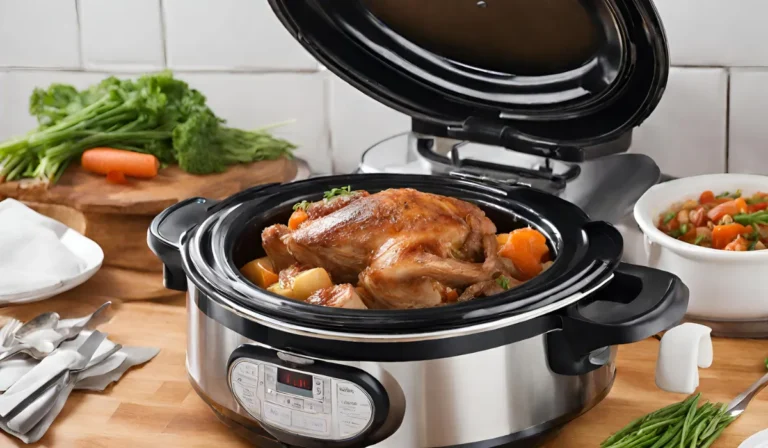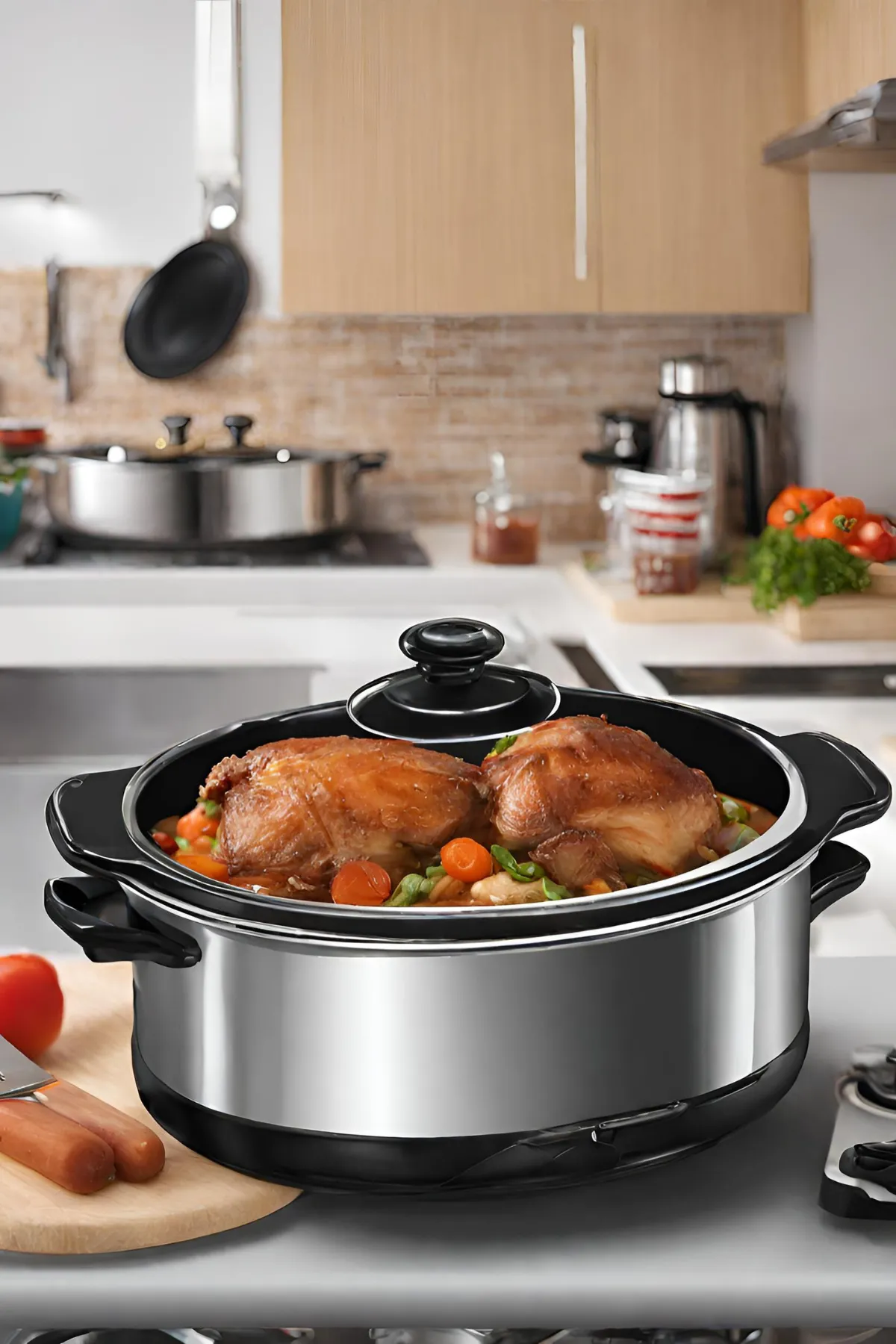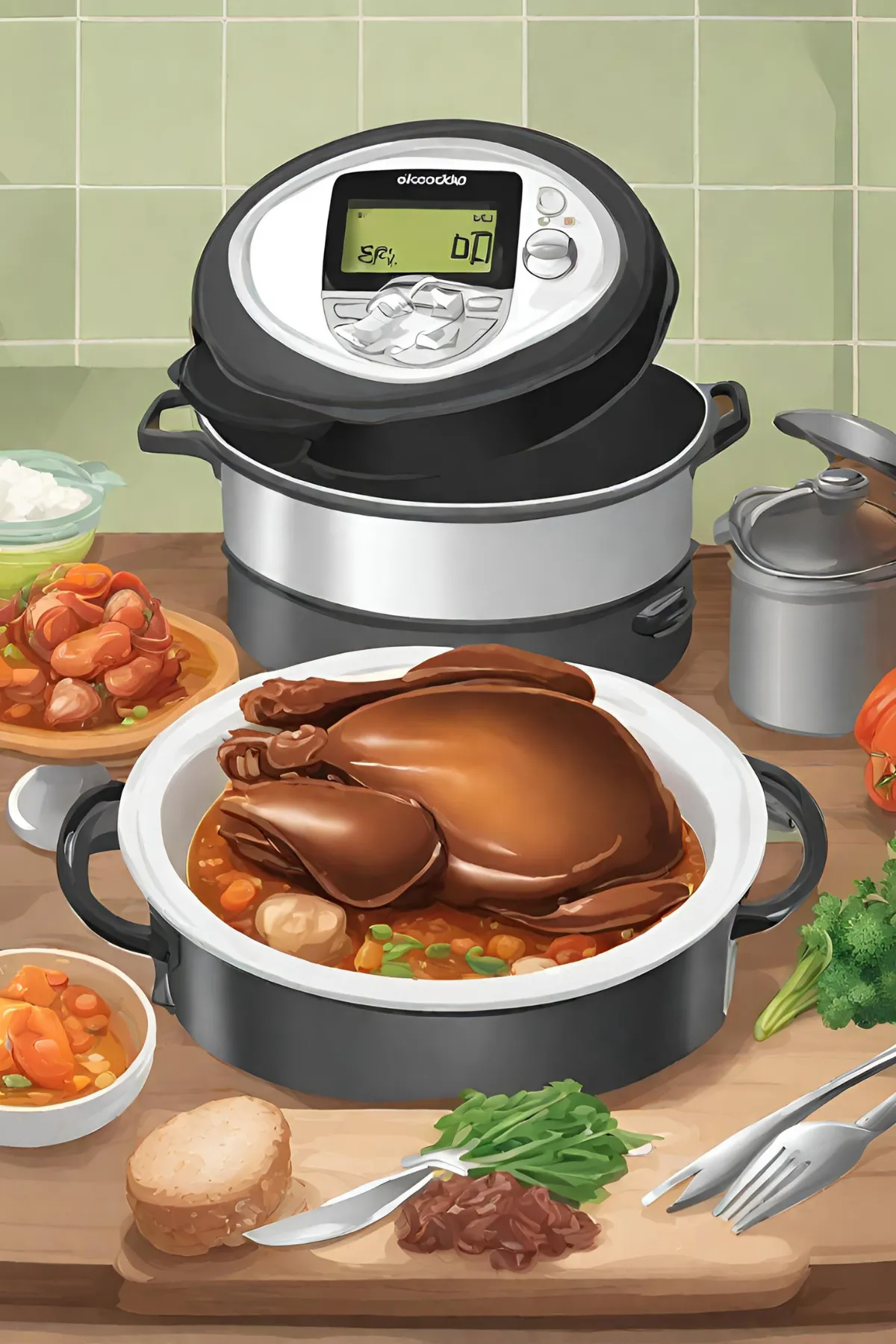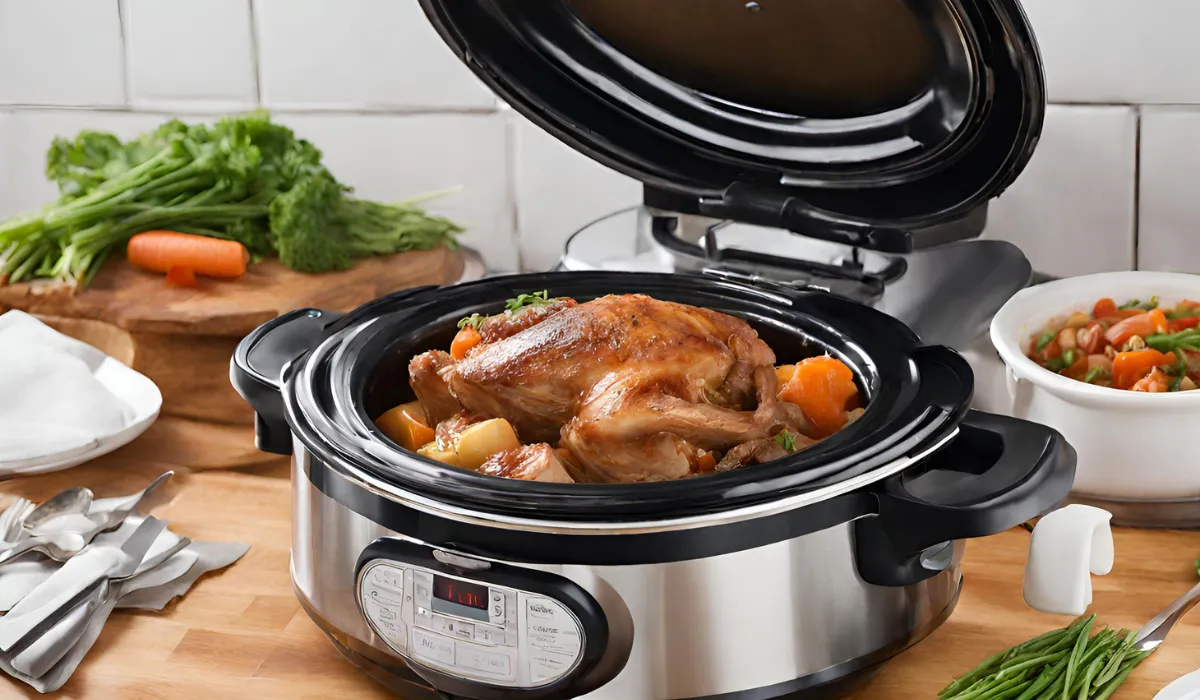Can I Leave My Slow Cooker on Warm Overnight?
Slow cooking has become a staple in many kitchens due to its convenience and ability to infuse flavors deeply into food. However, a common question arises among users: Can I leave my slow cooker on warm overnight? This article delves into the safety, practicality, and guidelines of using the warm setting on your slow cooker for extended periods, particularly overnight.
Introduction to Slow Cooking
Slow cookers are renowned for their efficiency and ease of use, making them ideal for preparing a wide range of dishes. The key to their functionality lies in the ability to cook food at a low temperature over several hours. Understanding the settings is crucial:
- Low: Cooks food slowly over a long period.
- High: Cooks food quicker than the low setting.
- Warm: Keeps cooked food at a safe temperature for serving.
For more diverse slow cooker recipes, explore our collection of Can Cooker Recipes.
Understanding the ‘Warm’ Setting on Slow Cookers
The ‘Warm’ setting is designed to keep food at a temperature that prevents bacterial growth while maintaining it at a ready-to-serve state. However, it’s important to recognize that this setting is not intended for cooking food but rather for keeping it warm after it has been cooked. According to FoodSafety.gov, maintaining the right temperature is crucial for food safety.
Food Safety Concerns with Slow Cookers
When it comes to leaving food in a slow cooker overnight, food safety is a primary concern. The danger zone for bacterial growth in food is between 40°F and 140°F. To ensure safety:
- Food should not be left in the danger zone for more than 2 hours.
- The ‘Warm’ setting should keep food above 140°F.
Guidelines for Leaving Food in a Slow Cooker Overnight
-
Check the Temperature: The key to safely leaving food in a slow cooker overnight is ensuring the appliance’s ‘Warm’ setting keeps the food above 140°F (60°C). This temperature is above the “danger zone” (40°F-140°F or 4°C-60°C), where harmful bacteria can grow. Use a food thermometer to check that your slow cooker maintains this safe temperature.
-
Limit Time on ‘Warm’ Setting: While it’s generally safe to leave food in the slow cooker on the ‘Warm’ setting, it’s advisable to limit this time to a few hours. Extending beyond this can not only impact food safety but also food quality. Aim to keep food on the ‘Warm’ setting for no more than 2-4 hours.
Impact on Food Quality
Using the ‘Warm’ setting for extended periods can significantly affect the texture and taste of your dishes:
-
Vegetables: They are prone to becoming overly soft and mushy, losing their texture and some of their flavors. This is particularly true for delicate vegetables.
-
Meats: While slow cooking is renowned for making meats tender, leaving them on ‘Warm’ for too long can lead to drying out, especially for leaner cuts. Meats may also become too tender, to the point of falling apart, which might not be desirable for certain dishes.
Tips for Optimal Slow Cooking Overnight
-
Choose the Right Recipes: Some dishes are more forgiving when left on ‘Warm’ overnight. Soups, stews, and certain cuts of meat (like pork shoulder or beef brisket) can tolerate extended warming better than others.
-
Consider Starting the Cooker Later: If possible, time your cooking so the meal finishes closer to when you’ll eat it. This reduces the time food needs to stay on ‘Warm’.
-
Use a Timer: A programmable slow cooker can start cooking at a set time, reducing the need to leave food on ‘Warm’ overnight. Alternatively, some models switch to ‘Warm’ automatically after the cooking cycle.
-
Safety First: Always ensure your slow cooker is in good condition, with no frayed cords or cracked ceramics, and place it on a stable, heat-resistant surface.
By adhering to these guidelines, you can enjoy the convenience of overnight slow cooking without sacrificing food safety or quality. This approach allows for delicious, ready-to-eat meals that fit into your schedule, making your slow cooker an invaluable tool in your kitchen arsenal.
Energy Consumption and Appliance Safety
-
Energy Efficiency: Slow cookers are designed to use less electricity than conventional ovens or stovetops, making them an energy-efficient option for cooking. They typically consume between 75 and 150 watts per hour when set on low, and slightly more when set on high.
-
Safety Considerations: Despite their efficiency, leaving any appliance on overnight requires consideration of safety and energy use. To mitigate risks, ensure your slow cooker is in good working condition, without any damaged cords or plugs, and place it on a stable, heat-resistant surface while in use.
-
Energy.gov Resources: For those interested in reducing their kitchen’s energy consumption further, Energy.gov offers a wealth of information on energy-efficient kitchen appliances and tips for reducing energy usage.
Alternatives to Overnight Cooking
If the idea of leaving your slow cooker on overnight raises concerns, there are alternative methods to ensure your meals are ready when you are, without compromising on safety or increasing energy bills:
-
Refrigeration and Reheating: One straightforward approach is to finish cooking your meal earlier in the evening, allow it to cool, and then store it in the refrigerator. You can then reheat the meal when needed, using a microwave, oven, or even putting it back into the slow cooker for a short duration.
-
Programmable Slow Cookers: Many modern slow cookers come with programmable features that allow the cooker to switch to a ‘Warm’ setting after the cooking time has elapsed. This feature keeps food safe for consumption without the need for continuous cooking, reducing energy use and offering peace of mind regarding safety.
Culinary Inspiration: Marry Me Chicken Recipe for Slow Cooker
To explore the versatility and convenience of slow cooking, try preparing the “Marry Me Chicken” recipe using your slow cooker. This dish, known for its rich flavors and tender chicken, is perfect for a special occasion or a comforting weeknight dinner. Using a slow cooker for this recipe not only enhances the flavors but also demonstrates the appliance’s capability to create delicious meals with minimal effort.
Remember, whether you’re cooking a special recipe or making everyday meals, being mindful of food safety, energy consumption, and appliance safety will ensure a positive and safe cooking experience.
Expert Tips for Safe Slow Cooking
-
Preheat Your Cooker: Always start with a preheated cooker to ensure that the food reaches a safe temperature more quickly.
-
Uniform Pieces for Even Cooking: Cut food into uniform pieces to promote even cooking. This helps ensure that all parts of the food reach the safe temperature.
-
Keep the Lid Closed: Avoid lifting the lid frequently. Each time you open the lid, the cooker loses heat, which can lead to longer cooking times and potentially unsafe food temperatures.
-
Use the Right Amount of Liquid: Slow cookers require a certain amount of liquid to operate correctly, but too much can dilute flavors, while too little may cause the food to dry out or burn.
-
Thaw Ingredients Before Cooking: Frozen foods can take too long to come up to temperature, risking bacterial growth. Thaw ingredients, especially meats, before adding them to the cooker.
-
Avoid Overfilling: To ensure even cooking, don’t overfill the cooker. Generally, it should be no more than two-thirds full.
-
Store Leftovers Properly: Cool leftovers quickly and store them in the refrigerator to minimize the risk of bacterial growth.
Frequently Asked Questions
Q: Is it safe to leave a slow cooker on for 24 hours?
A: Generally, it is safe to leave a slow cooker on for extended periods, such as 24 hours, as long as the cooker is functioning properly and the food is maintained above the danger zone of 40°F to 140°F (4°C to 60°C). Modern slow cookers are designed to be left operating for long periods.
Q: Can slow cookers cause food poisoning?
A: Slow cookers can cause food poisoning if food is left in the “danger zone” (40°F to 140°F or 4°C to 60°C) for too long, where bacteria can multiply rapidly. To avoid this, ensure the slow cooker reaches a safe temperature quickly and maintains it throughout the cooking process.
By adhering to these tips and guidelines, you can enjoy the convenience of slow cooking while ensuring that your meals are both delicious and safe to eat.
Conclusion
In summary, while it is generally safe to leave your slow cooker on the ‘Warm’ setting overnight, it is crucial to adhere to food safety guidelines to prevent any health risks. By following these tips and understanding your slow cooker’s capabilities, you can enjoy the benefits of slow cooking with peace of mind.
PrintSlow Cooker Overnight Safety: Guidelines for Warm Setting Use
- Total Time: Varies + additional time on 'Warm' setting
- Yield: Depends on the recipe
Description
Ensure your slow-cooked meals are both delicious and safe by following these overnight safety guidelines. Perfect for busy individuals who want to wake up or come home to a warm meal without compromising on food safety or quality.
Ingredients
- 1 reliable slow cooker with a ‘Warm’ setting
- 1 food thermometer
Instructions
- Preparation: Check your slow cooker to ensure it’s in good working condition, with no damaged cords or parts.
- Temperature Check: Use a food thermometer to ensure the ‘Warm’ setting maintains a temperature above 140°F to prevent bacterial growth.
- Timing: Limit the time food remains on the ‘Warm’ setting to a maximum of 2-4 hours to ensure optimal food safety and quality.
Notes
- Choose recipes suitable for extended ‘Warm’ setting use, such as stews or certain cuts of meat.
- Ensure the slow cooker is placed on a stable, heat-resistant surface to prevent accidents.
- Prep Time: 15 minutes (to check equipment and prepare ingredients)
- Cook Time: Varies depending on the recipe
- Category: Cooking Guidelines
- Method: Slow Cooking
- Cuisine: N/A




